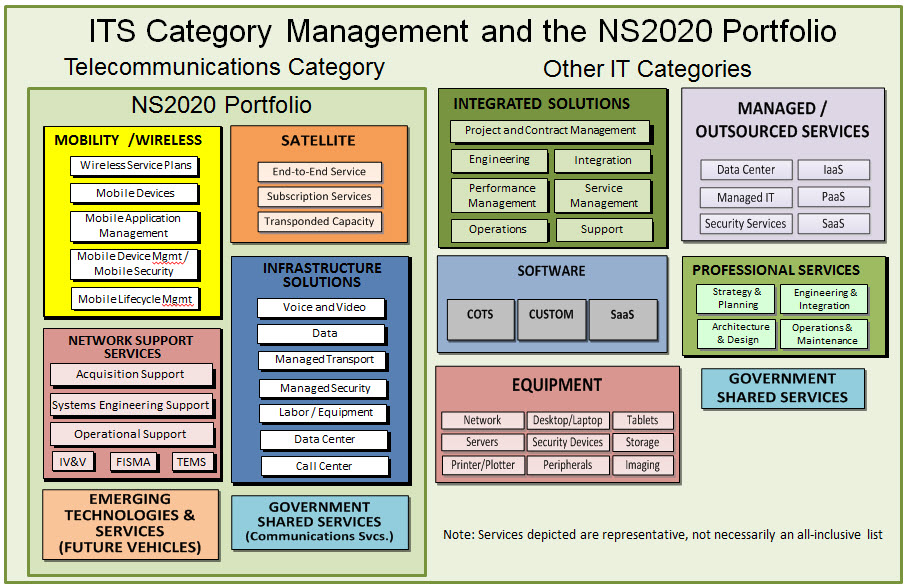(This blog post is part of a multi-week series reviewing data and trends from GSA’s IT acquisition vehicles for FY 15. Read previous posts at http://gsablogs.gsa.gov/technology/)
As agencies move to a more mobile workforce, we have seen their demand for wireless services increase. Government use of GSA’s Federal Strategic Sourcing Initiative (FSSI) Wireless Blanket Purchase Agreements (BPAs) in Fiscal Year 2015 (FY15) skyrocketed 500% over FY14.
This increase is due to greater demand for better management and savings as agencies integrate mobile technology into their IT enterprise. It’s also due to agencies transforming their work environments with more mobile and flexible options.
Embracing Cost Savings
In FY15, we saw an average of 27% in savings with FSSI Wireless BPAs compared to prior year expenses for those agencies.
These buyers found Monthly Recurring Charges (MRCs) per device dropping to $38.82 per user per month, from the $55.40 federal average at the start of the program, over many common voice and data smartphone plans. The BPAs are saving government agencies more than $16 per month per user. This marks a new low for the average MRC and highest monthly savings rate to date.
Since these are service costs, and not just one-time costs, the savings are compounding each month agencies are on the contract.
FY15 federal government savings for the program exceeded $10 million as a result of better pricing, management, and competition credits. This means the government is leveraging government-wide discounts to save more each year, while it deploys devices with a greater focus on meeting the ever-increasing data needs for agencies.
Managing Wireless and Mobile Better
Another big priority we saw in FY15 was agencies’ commitment to better managing wireless resources across the enterprise. 85% of defense and civilian cabinet-level agencies are using FSSI Wireless BPAs. Many of them are slowly consolidating wireless via phased task orders to fully consolidate and better manage mobile assets.
Managing wireless better, attaining volume-driven discounts, and consolidating orders makes agencies more efficient operationally as well as financially. Consolidation, standardization, better inventory management, and increased security are top priorities. Tools that can help them manage mobile resources, applications, and security will become even more important going forward.
Other Wireless Insights
Agencies want flexible features when buying wireless, which is fueling the growing popularity of the FSSI Wireless BPAs. Discounted wireless plan pricing, no-cost devices, and the pooling option for data and minutes are saving agency dollars by allowing an agency’s high-volume users to leverage the unused minutes and MBs purchased by lower volume users, further reducing overage costs.
The most popular data add-on and data-only plans continue to be 500MB Pooled and Unlimited Data plans. Like last year, the most popular voice plans under the BPAs are the 400 Minute Pooled and 100 Minute Pooled plans. This means that agencies have been getting better at driving their carrier costs down by purchasing what they need and optimizing their plans, rather than the “set it and forget it” wireless purchasing and management approach of the past.
About half of federal agencies using FSSI Wireless are using two or more contractors to meet their enterprise-wide wireless needs. This may be a factor of transitioning to a new contract, after which they’ll consolidate to one carrier. It can also encourage greater competition and cost savings in task order negotiations.
FSSI Wireless BPA users reported the ability to do faster procurements than anticipated. This is a plus when doing a phased approach to fully consolidate and allowing a flexible transition timeline depending on agency need, while driving down the transaction costs.
What’s in Store in FY16
GSA in partnership with our customer agencies is already working on the next generation of wireless and mobile solutions – known as Mobility 2.0.
Mobility 2.0 is a collaborative approach with a cross-agency task force to address the next generation of acquisition planning aimed at supporting how the government buys and manages wireless/mobility programs in the future.
We’re preparing to launch a new Mobility 2.0 Interact Community that industry and agencies can join to keep up-to-date on new initiatives and plans.
The February 9th Mobility webinar and April 14th live event are for agency officials to keep abreast of the latest trends, initiatives and collaboration about government wireless requirements, needs, and best choices for acquiring wireless and mobile resources. Save the dates and stay tuned to @GSA_ITS twitter account on how to register.
In the meantime, agency buyers looking for savings and management tools can start with GSA’s Enterprise Wide Mobility website.
The good news from FY15, and hopefully in coming years, is….The more agencies use government-wide wireless contracts, the greater cost savings for government and taxpayers.

